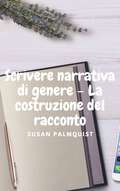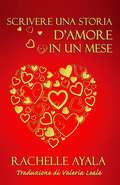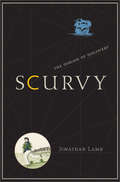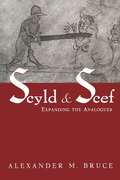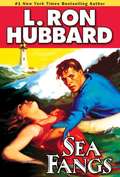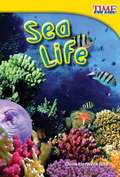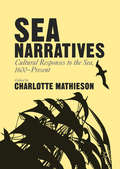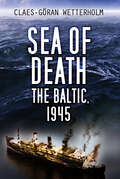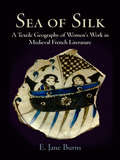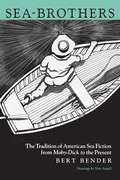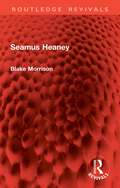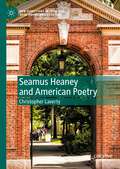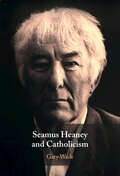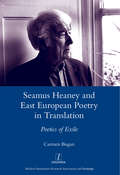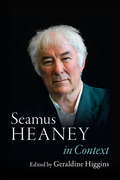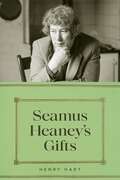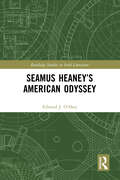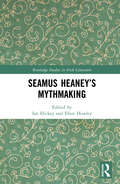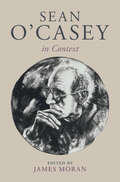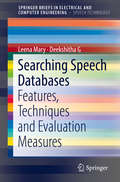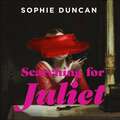- Table View
- List View
Scrivere narrativa di genere – La costruzione del racconto: Come evitare le insidie più comuni nella scrittura di un racconto
by Susan PalmquistScopri come Evitare le insidie più comuni nella scrittura di un racconto Gli scrittori principianti spesso cadono in errori banali che con un po’ di tecnica possono essere corretti o evitati. Creare il plot perfetto per il tuo racconto In La costruzione del racconto imparerai la principale differenza tra il plot di una storia breve e il plot di un romanzo, e in che modo questo aumenterà le tue chances di veder pubblicata la tua storia. Creare personaggi che i lettori troveranno indimenticabili È indispensabile condurre i lettori a trovare piacere nel leggere dei tuoi personaggi e della loro storia, e qui imparerai come farlo in modo specifico per questa forma breve di narrazione. Fare ricerche e trovare il mercato migliore per la tua storia Una volta creata la tua storia perfetta, avrai bisogno di trovarle una collocazione. Due capitoli sono dedicati alla ricerca di mercato e a dove cercare mercati per i racconti.
Scrivere una storia d'amore in un mese: Guida per scrivere una storia d'amore in un mese
by Rachelle AyalaVorresti sapere... · La formula magica per creare un romanzo rosa con una trama moderna e contemporanea? · Come essere motivata per scrivere e portare a termine le tue idee relative a una storia d’amore? · Come gli scrittori di successo scrivono in modo coerente e producono dei lavori di alta qualità a intervalli regolari? · Come concepire personaggi forti che coinvolgano le lettrici e come annodare i fili delle trame che possono rendere unico il tuo libro rosa? · Come un gruppo solidale di scrittori possa motivare ciascun componente in modo da scrivere più velocemente e meglio? · Perché fissare un numero di parole da produrre quotidianamente non è il modo migliore per fare dei progressi? · Come mantenere attiva la tua motivazione, libro dopo libro e pubblicare con regolarità? · Come farsi amici tra gli scrittori di storie d’amore e come creare con loro il proprio gruppo di supporto in modo da incoraggiarsi reciprocamente per ottenere risultati sempre più grandiosi? In questo manuale imparerai un metodo semplice per scrivere un libro rosa in breve tempo. Scoprirai anche perché fare parte di un gruppo di autori con idee simili è un modo grandioso per aumentare la tua produttività così come per tenere alto il morale, per trovare aiuto e assistenza durante il percorso di stesura e pubblicazione. Buona parte del lavoro comincia con te, con le tue convinzioni, i tuoi desideri e la tua fiducia in te stessa. Inoltre, aggiungendoci le tecniche sperimentate e l’uso di processi che funzionano, potrai portare la tua scrittura a un livello superiore, potrai completare i tuoi libri rosa più velocemente e con regolarità. Scrivere una storia d’amore in un mese è un metodo di scrittura che implica l’aiuto di una comunità di scrittori. Il suo obiettivo è metterti in grado di terminare un libro rosa con una singola trama nel periodo di trenta giorno e darti la tecnica per ripetere il processo. Impa
Scurvy: The Disease of Discovery
by Jonathan LambScurvy, a disease often associated with long stretches of maritime travel, generated sensations exceeding the standard of what was normal. Eyes dazzled, skin was morbidly sensitive, emotions veered between disgust and delight. In this book, Jonathan Lamb presents an intellectual history of scurvy unlike any other, probing the speechless encounter with powerful sensations to tell the story of the disease that its victims couldn't because they found their illness too terrible and, in some cases, too exciting.Drawing on historical accounts from scientists and voyagers as well as major literary works, Lamb traces the cultural impact of scurvy during the eighteenth-century age of geographical and scientific discovery. He explains the medical knowledge surrounding scurvy and the debates about its cause, prevention, and attempted cures. He vividly describes the phenomenon and experience of "scorbutic nostalgia," in which victims imagined mirages of food, water, or home, and then wept when such pleasures proved impossible to consume or reach. Lamb argues that a culture of scurvy arose in the colony of Australia, which was prey to the disease in its early years, and identifies a literature of scurvy in the works of such figures as Herman Melville, Samuel Taylor Coleridge, Francis Bacon, and Jonathan Swift.Masterful and illuminating, Scurvy shows how the journeys of discovery in the eighteenth century not only ventured outward to the ends of the earth, but were also an inward voyage into the realms of sensation and passion.
Scyld and Scef: Expanding the Analogues
by Alexander M. BruceFirst published in 2002. Routledge is an imprint of Taylor & Francis, an informa company.
Sea Fangs
by L. Ron HubbardBuckle up for adventure in this action-packed tale. Sailor Bob Sherman has his hands full trying to save the ocean yacht Bonito from capsizing in hurricane waters off Venezuela's coast--no thanks to the know-it-all attitude and incompetence of the vessel's captain. Sherman's rugged good looks and seafaring skills at least bring him the attentions of Phyllis Marmion, a raven-haired beauty and daughter of the yacht's owner.Unfortunately, Sherman's also the bitter enemy of the girl's father who, with the support of corrupt officials, had stripped him of a highly profitable drilling business and taken his land years before. More is at stake than oil fields when the ship is attacked by modern pirates and are all taken captive. Soon Sherman, crew and passengers find themselves in a dungeon jail on an uncharted island known locally as the Island of Death--a place where no one escapes, and Sherman's futile efforts have marked him for an early death. "...a 'must' for his legions of fans and an impressive tribute to his storytelling skills in the heyday of pulp magazine fiction!" --The Midwest Book Review
Sea Life
by Dona Herweck RiceFrom tide pools to the ocean, the sea is filled with amazing lifeforms! Early readers will be engaged from beginning to end with informational text, vivid photos, and a picture glossary of marine animals.
Sea Narratives: Cultural Responses to the Sea, 1600-Present
by Charlotte MathiesonSea Narratives: CulturalResponses to the Sea, 1600-Present explores the relationship between the sea and culturefrom the early modern period to the present. The collection uses the concept ofthe 'sea narrative' as a lens through which to consider the multiple ways inwhich the sea has shaped, challenged, and expanded modes of culturalrepresentation to produce varied, contested and provocative chronicles of thesea across a variety of cultural forms within diverse socio-cultural moments. Sea Narratives provides a uniqueperspective on the relationship between the sea and cultural production: itreveals the sea to be more than simply a source of creative inspiration,instead showing how the sea has had a demonstrable effect on new modes andforms of narration across the cultural sphere, and in turn, how these formshave been essential in shaping socio-cultural understandings of the sea. Theresult is an incisive exploration of the sea's force as a cultural presence.
Sea Treasures
by Charles Davis Ira E. Aaron Joan SchellyThis textbook provides short stories and activities designed for the following skills: Story Problems and Solutions, Figuring Out Words, Getting Word Meaning, Using a Dictionary for Meaning, Story Characters, Using a Dictionary for Pronunciation, Recognizing Fact and Fiction, Using an Encyclopedia, Understanding a Point of View and Flashback, Understanding Idioms, Recognizing Types of Literature, Story Characters and Setting, Main Idea and Supporting Details, Classifying, Making a Summary, Reading for Different Purposes, Sequence Relationships, Reading Diagrams, Varying Reading Rate, Understanding Figures of Speech, and Analogous Relationships.
Sea and Sardinia
by D. H. LawrenceIn January 1921, D. H. Lawrence and his wife Frieda visited Sardinia. Although the trip lasted only nine days, Lawrence wrote an intriguing account of Sardinian life that not only evokes the place, people and local customs but is also deeply revealing about the writer himself. Remarkable for its metaphoric and symbolic descriptions, the book is transfused with the author's anger and joy. His prejudices and his political prophecies make "Sea and Sardinia" a unique and dynamic piece of travel writing.
Sea of Death: The Baltic, 1945
by Claes-Göran WetterholmAmid the turmoil of the dying days of the Second World War, a series of ships were sunk in the Baltic. These terrible disasters add up to be the greatest loss of life ever recorded at sea, but the stories of these ships have been lost from view. While everyone recognises the name Titanic, the names Cap Arcona, Goya,General von Steuben and Thielbek draw little more than blank stares.Claes-Göran Wetterholm brings the horror of these tragic events to life in this gripping study, first published in Swedish, as he collates the unknown stories of four major shipping disasters, the most terrible in history. Combining archive research with interviews with survivors and the relatives of those who died, Wetterholm vividly conveys his experiences of meeting many witnesses to a forgotten and horrifying piece of history.
Sea of Silk
by E. Jane BurnsThe story of silk is an old and familiar one, a tale involving mercantile travel and commercial exchange along the broad land mass that connects ancient China to the west and extending eventually to sites on the eastern Mediterranean and along sea routes to India. But if we shift our focus from economic histories that chart the exchange of silk along Asian and Mediterranean trade routes to medieval literary depictions of silk, a strikingly different picture comes into view. In Old French literary texts from the twelfth and thirteenth centuries, emphasis falls on production rather than trade and on female protagonists who make, decorate, and handle silk.Sea of Silk maps a textile geography of silk work done by these fictional women. Situated in northern France and across the medieval Mediterranean, from Saint-Denis to Constantinople, from North Africa to Muslim Spain, and even from the fantasy realm of Arthurian romance to the historical silkworks of the Norman kings in Palermo, these medieval heroines provide important glimpses of distant economic and cultural geographies. E. Jane Burns argues, in brief, that literary portraits of medieval heroines who produce and decorate silk cloth or otherwise manipulate items of silk outline a metaphorical geography that includes France as an important cultural player in the silk economics of the Mediterranean.Within this literary sea of silk, female protagonists who "work" silk in a variety of ways often deploy it successfully as a social and cultural currency that enables them to traverse religious and political barriers while also crossing lines of gender and class.
Sea-Brothers
by Tony Angell Bert BenderSea-Brothers offers the most extensive analysis to date of the sea and its meaning in American literature. On the basis of his study of Melville, Crane, London, Hemingway, Matthiessen, and ten lesser-known sea-writers, Bert Bender argues that the tradition of American sea fiction did not end with the opening of the western frontier and the replacement of sailing ships by steamers. Rather, he demonstrates its continuity and vitality, identifying a central vision within the tradition and showing how particular authors draw from, transform, and contribute to it.What is most distinctive about American sea fiction, Bender contends, is its visionary, often mystical, response to the biological world and to man's perceived place in the larger universe. When Melville envisioned the sea as the essential element of life, indeed as life itself, he changed the course of American sea fiction by introducing the relevance of biological thought. But his meditations on the whale and "the ungraspable phantom of life" project a different reality from that envisioned by his successors. In American sea fiction after Melville, the influence of Origin of Species is as powerful as that of Moby Dick or the theme of sailing ships being displaced by steam.The ideal of brotherhood so central to American sea fiction was severely compromised by the biological reality of a competitive, warring nature. Twentieth-century sea fiction has continued to center on the biological world and address the possibility of democratic brotherhood, but the issues were fundamentally changed by Darwin's theories.This book will be a valuable source for students and scholars of American literature and will interest readers of sea fiction.
Seamus Heaney (Routledge Revivals)
by Blake MorrisonIn recent years Seamus Heaney has earned the reputation of being ‘the most important Irish poet since Yeats’. In this book, originally published in 1982, Blake Morrison identifies the central characteristics of his achievement, uncovering the sources of Heaney’s poems, placing his work within both Irish and Anglo-American traditions and explaining his poetry’s complex relation to the political troubles in Northern Ireland. A lively, personal and carefully researched account by a writer who is himself a poet and critic, this book forcefully challenges some of the myths surrounding Heaney’s work and places it in proper perspective.
Seamus Heaney and American Poetry (New Directions in Irish and Irish American Literature)
by Christopher LavertyThis book examines the influence of American poetry on Seamus Heaney’s achievement by close attention to the themes, style, and resonances of his poetry at different stages of his career, including his appointments in Berkeley and Harvard. Beginning with an examination of Heaney’s education at Queen’s University, this study presents comparative close readings which explore the influence of five American poets he read during this period: Robert Frost, John Crowe Ransom, Theodore Roethke, Robert Lowell, and Elizabeth Bishop. Laverty demonstrates how Heaney returned to several of these poets in response to difficulty and to consolidate later aesthetic developments. Heaney’s ambivalent critical treatment of Sylvia Plath is investigated, as is his partial misreading of Bishop, who is understood today more sensitively than in her lifetime. This study also probes the reasons for his elision of other prominent American writers, making this the first comprehensive assessment of American influence on Heaney’s poetry.
Seamus Heaney and Catholicism
by Gary WadeSeamus Heaney and Catholicism makes extensive use of unpublished material to offer fresh insights into Heaney's complex engagement with Catholicism. Gary Wade explores how Catholicism operates in ways other than social and political, which have largely been the focus of critics up until now. Using extensive unpublished material, including early drafts of some familiar poems, it offers close readings which explore how Catholicism operates at the level of feeling, and how it continued to have an emotional purchase on Heaney long after he had left behind orthodox practice. It also engages with Heaney's increasing concern, in his later work, with the loss of a metaphysical sensibility, and his turning to the Roman poet Virgil to deal with questions of death and post-mortem existence. The book concludes by arguing that Heaney's Catholicism is displaced rather than rejected, and that his vision expands to accommodate both the Christian and the Classical worlds.
Seamus Heaney and East European Poetry in Translation: Poetics of Exile
by Carmen Bugan"Poetry born of historical upheaval bears witness both to actual historical events and considerations of poetics. Under the duress of history the poet, who is torn between lamentation and celebration, seeks to achieve distance from his troubled times. Add to this a deep love for and commitment to the Irish and English poetic traditions, and a strong desire to search for models outside his culture, and you have the poetry of the Irish Nobel laureate Seamus Heaney (1939-). In this study, Carmen Bugan looks at how the poetry of Seamus Heaney, born of the Troubles in Northern Ireland, has encountered the'historically-tested imaginations' of Czeslaw Milosz, Joseph Brodsky, Osip Mandelstam, and Zbigniew Herbert, as he aimed to fulfil a Horatian poetics, a poetry meant to both instruct and delight its readers. Carmen Bugan is the author of a collection of poems, Crossing the Carpathians, and a memoir, Burying the Typewriter."
Seamus Heaney and the Language Of Poetry
by Bernard O'DonoghueThis book scrutinizes Heaney's language in order to examine his theory of poetry and the writer's responsibility to art and politics. The author, himself a poet, works chronologically through the poetry and discusses it in light of Heaney's writings on the appropriate language of poetry. Chapters also look at Heaney's language and at the government of the tongue.
Seamus Heaney in Context
by Geraldine HigginsFew poets have captured the imagination of the world like Seamus Heaney. Recognized as one of the truly outstanding poets of our time, Heaney's work is both critically acclaimed and popular with the general reader. It is taught in classrooms across the globe and has been translated into more than twenty-seven languages. Presenting original research from an international field of scholars, Seamus Heaney in Context offers new pathways to explore the places, times and influences that made Heaney a poet. Drawing on newly available archival and print sources, these essays situate Heaney in a multitude of contexts that help readers navigate received ideas about his life and work. In mapping intersecting themes in the current terrain of Heaney criticism, this study also signposts new directions for understanding Heaney's poetry in future contexts.
Seamus Heaney's Gifts
by Henry Hart“The fact of the matter,” Seamus Heaney said in a 1997 interview with the Paris Review, “is that the most unexpected and miraculous thing in my life was the arrival in it of poetry.” Throughout his career, Heaney, who received the 1995 Nobel Prize in Literature, maintained that poetry came to him from a mysterious source like a gift of grace. He also believed that the recipient of this sort of boon had an ethical obligation to share it with others. Seamus Heaney’s Gifts, by the noted scholar and poet Henry Hart, offers the first comprehensive examination of Heaney’s preoccupation with gifts and gift-exchange. Drawing on extensive research in Heaney’s papers, as well as three decades of correspondence with the poet, Hart presents a richly detailed study of Heaney’s life and work that foregrounds the Irishman’s commitment to the vocation of poetry as a public art to be shared with audiences and readers around the world. Heaney traced his devotion to gifts back to the actual present of a Conway Stewart fountain pen that his parents gave him at the age of twelve when he left his family farm in Northern Ireland to attend a private Catholic secondary school in Londonderry. He commemorated this gift in “Digging,” the first poem in his first book, and in two poems he wrote near the end of his life: “The Conway Stewart” and “On the Gift of a Fountain Pen.” Friends and doctors had warned him that his endless globetrotting to give lectures and poetry readings had damaged his health. Yet he felt obligated to share his talent with audiences around the world until his death in 2013. As Hart shows, Heaney found his first models for gift-giving in his rural community in Northern Ireland, the Bible, the rituals of the Catholic Church, and the literature of mystical and mythical quests. Blending careful research with evocative commentaries on the poet’s work, Seamus Heaney’s Gifts explains his ideas about the artist’s gift, the necessity of gift-exchange acts, and the moral responsibility to share one’s talents for the benefit of others.
Seamus Heaney’s American Odyssey (Routledge Studies in Irish Literature)
by Edward J. O’SheaSeamus Heaney’s American Odyssey describes, with a new archive of correspondence, interviews, and working drafts, the some 40 years that Seamus Heaney spent in the United States as a teacher, lecturer, friend, and colleague, and as an active poet on the reading circuit. It is anchored by Heaney’s appointments at Berkeley and Harvard, but it also follows Heaney’s readings “on the road” at three important points in his career. It argues that Heaney was initially receptive to American poetry and culture while his career was still plastic, but as he developed more assurance and fame, he became much more critical of America as a superpower, especially in the military reaction to 9/11. This study emphasizes “the heard Heaney” as much as the “writerly Heaney” by listening in on key poetry readings at different times and to recorded but unpublished lectures on American and British poets at Harvard. It includes accounts by his creative writing students, aspiring poets, who testify to his mentoring as well as modeling for them how one can be “a poet in the world” as he was most strikingly.
Seamus Heaney’s Mythmaking (Routledge Studies in Irish Literature)
by Ian Hickey Ellen HowleySeamus Heaney’s Mythmaking examines Seamus Heaney’s poetic engagement with myth from his earliest work to the posthumous publication of Aeneid Book VI. The essays explore the ways in which Heaney creates his own mythic outlook through multiple mythic lenses. They reveal how Heaney adopts a demiurgic role throughout his career, creating a poetic universe that draws on diverse mythic cycles from Greco-Roman to Irish and Norse to Native American. In doing so, this collection is in dialogue with recent work on Heaney’s engagement with myth. However, it is unique in its wide-ranging perspective, extending beyond Ancient and Classical influences. In its focus on Heaney’s personal metamorphosis of several mythic cycles, this collection reveals more fully the poet’s unique approach to mythmaking, from his engagement with the act of translation to transnational influences on his work and from his poetic transformations to the poetry’s boundary-crossing transitions. Combining the work of established Heaney scholars with the perspectives of early-career researchers, this collection contains a wealth of original scholarship that reveals Heaney’s expansive mythic mind. Mythmaking, an act for which Heaney has faced severe criticism, is reconsidered by all contributors, prompting multifaceted and nuanced readings of the poet’s work.
Sean O'Casey in Context (Literature in Context)
by James MoranSean O'Casey is one of Ireland's best-known writers. He is the most frequently performed playwright in the history of the Irish National Theatre, and his work is often revived onstage elsewhere. O'Casey is also widely studied in schools, colleges, and universities in the English-speaking world. This book offers a new contextualisation of this famous writer's work, revisiting his association with Irish nationalism, historical revisionism, and celebrated contemporaries such as W. B. Yeats and Lady Gregory. The volume also brings O'Casey's work into contact with topics including disability studies, gender and sexuality, post-colonialism, ecocriticism, and race. Sean O'Casey in Context explores a number of existing ideas about O'Casey in the light of new academic developments, and updates our understanding of this important writer by taking into account recent scholarly thinking and a range of theatrical productions from around the globe.
Searching Speech Databases: Features, Techniques and Evaluation Measures (SpringerBriefs in Speech Technology)
by Leena Mary Deekshitha GThis book presents techniques for audio search, aimed to retrieve information from massive speech databases by using audio query words. The authors examine different features, techniques and evaluation measures attempted by researchers around the world. The topics covered also include available databases, software / tools, patents / copyrights, and different platforms for benchmarking. The content is relevant for developers, academics, and students.
Searching for Juliet: The Lives and Deaths of Shakespeare's First Tragic Heroine
by Sophie Duncan'A thirteen-year-old girl is at a party. A boy, slightly older, sees her. Juliet. This book is about that girl.'A cultural, historical and literary exploration of the birth, death and legacy of the ultimate romantic heroine - Shakespeare's Juliet Capulet.Juliet Capulet is the heartbeat of the world's most famous love story. She is an enduring romantic icon. And she is a captivating, brilliant, passionate teenage girl who is read and interpreted afresh by each new generation.Searching for Juliet takes us from the Renaissance origin stories behind William Shakespeare's child bride to the boy actor who inspired her creation onstage. From enslaved people in the Caribbean to Italian fascists in Verona, and real-life lovers in Afghanistan. From the Victorian stage to 1960s cinema, Baz Luhrmann and beyond.Sophie Duncan draws on rich cultural and historical sources and new research to explore the legacy and reach of Romeo and Juliet far beyond the literary sphere. With warmth, wit and insight, she shows us why Juliet is for now, for ever, for everyone.(P)2023 Hodder & Stoughton Limited
